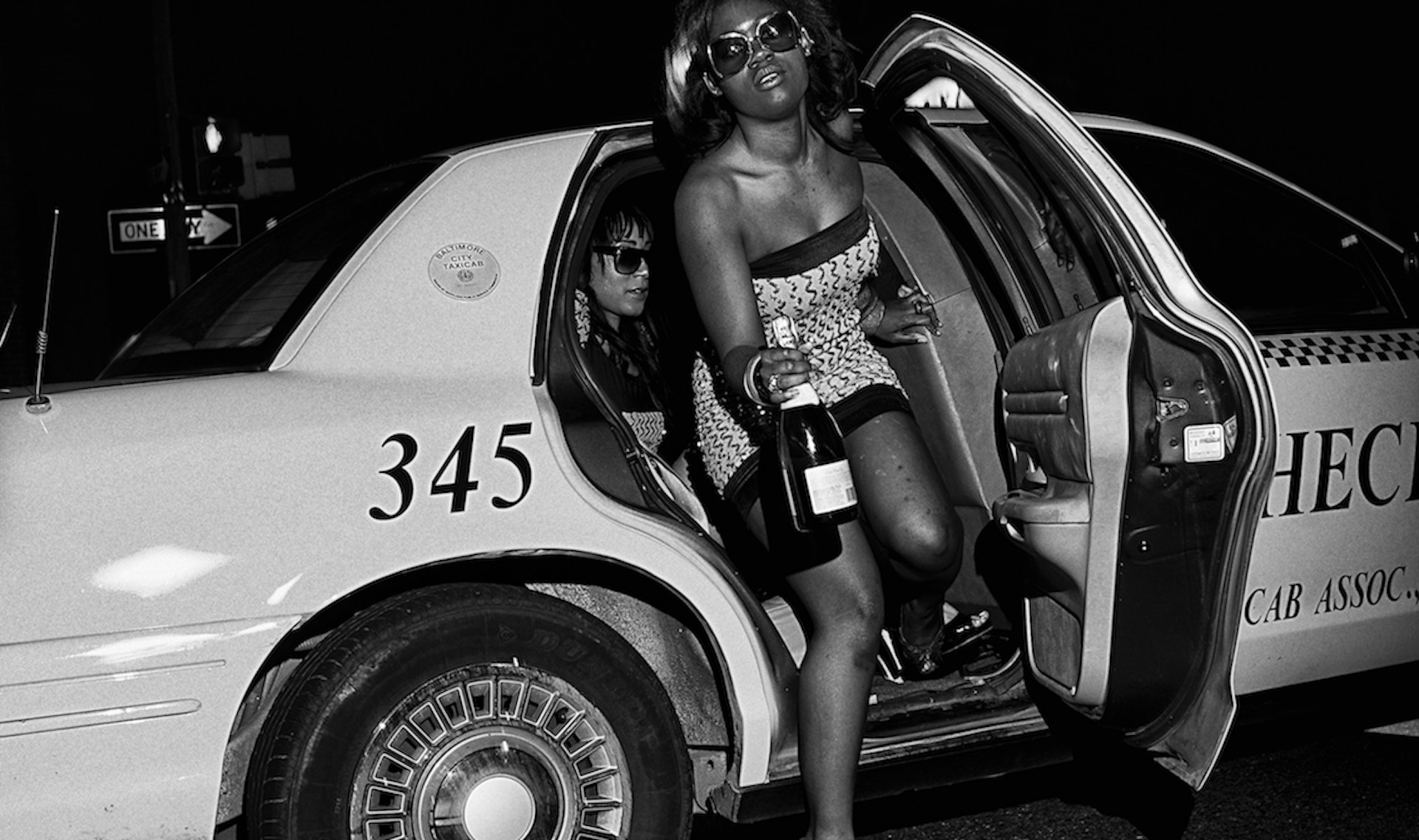
A raucous portrait of Baltimore after dark
- Text by HUCK HQ
- Photography by Joseph M Giordano
Photographer Joseph M Giordano was 22-years-old when got his hands on Brassaï’s seminal Paris de Nuit (1933) – a book filled with arresting photographs of back alleys, Métro stations, and bistros in the French capital’s nocturnal landscape. “I instantly loved it,” Giordano remembers. “I was like, I need to do something like this for Baltimore.”
So, Giordano, set out on the streets of his hometown of Baltimore, wandering around and documenting the city’s nightlife, from the raucous drag parties, crime scenes, burlesque nights and hip-hop battles in boxing gyms. These photos, accumulated over 25 years, are now collected in a new book, titled We Used To Live At Night, which offers a vibrant tapestry of the city.
As stated in the book’s introduction, Giordano is acutely aware of the privileged position he is afforded as a white male photographer in being able to wander the streets at night. This was particularly the case in the mid-90s when he was first starting out.
“For a Black photographer, if they’re going to a crime scene with a camera or going to these events, they could get stopped by police,” he says. “[As a white photographer] you get this freedom that other people don’t.” It’s a point he wants readers to acknowledge and something he really hopes to see change.
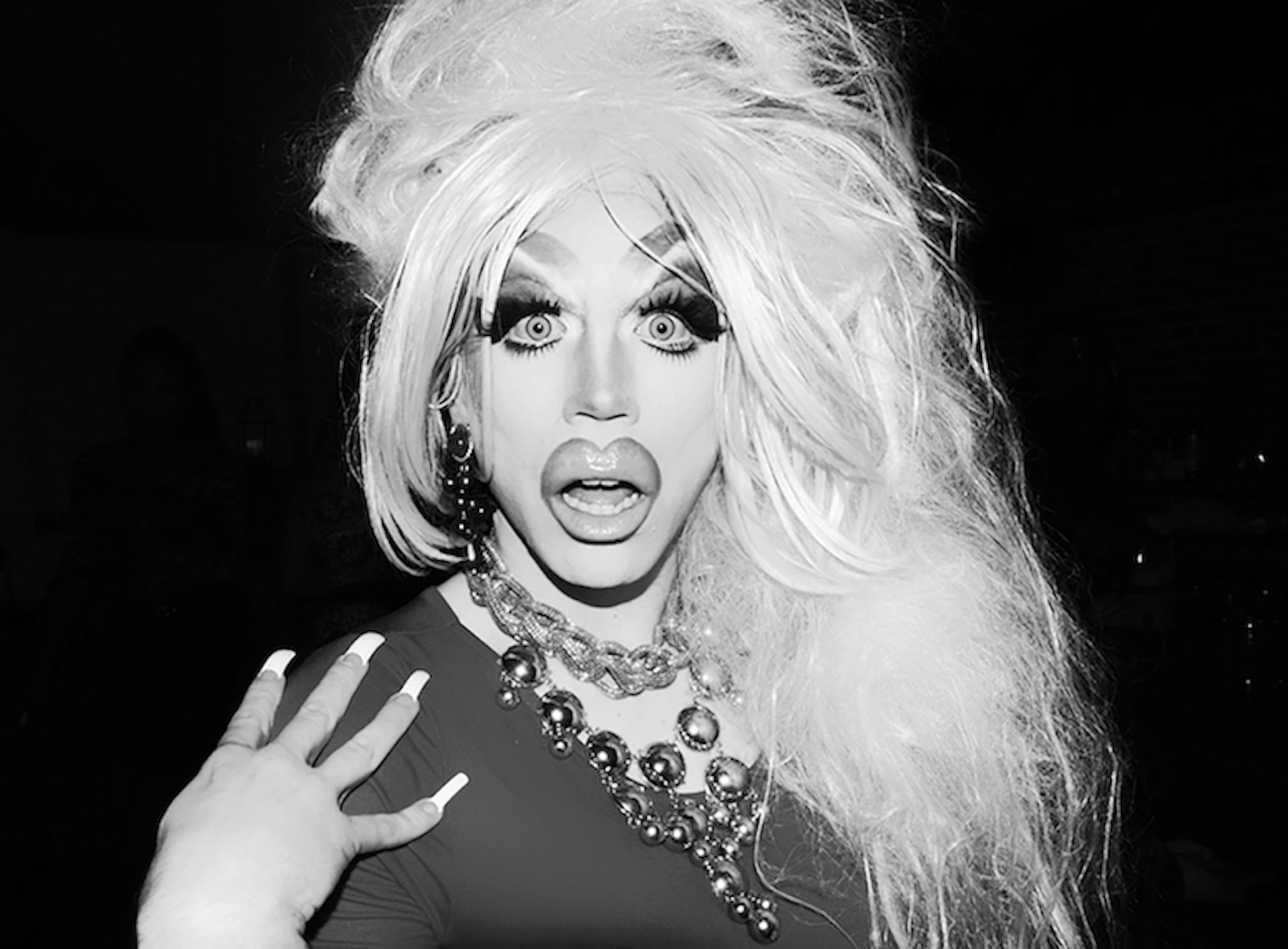
Klitorika Browne at St Paul Street drag night
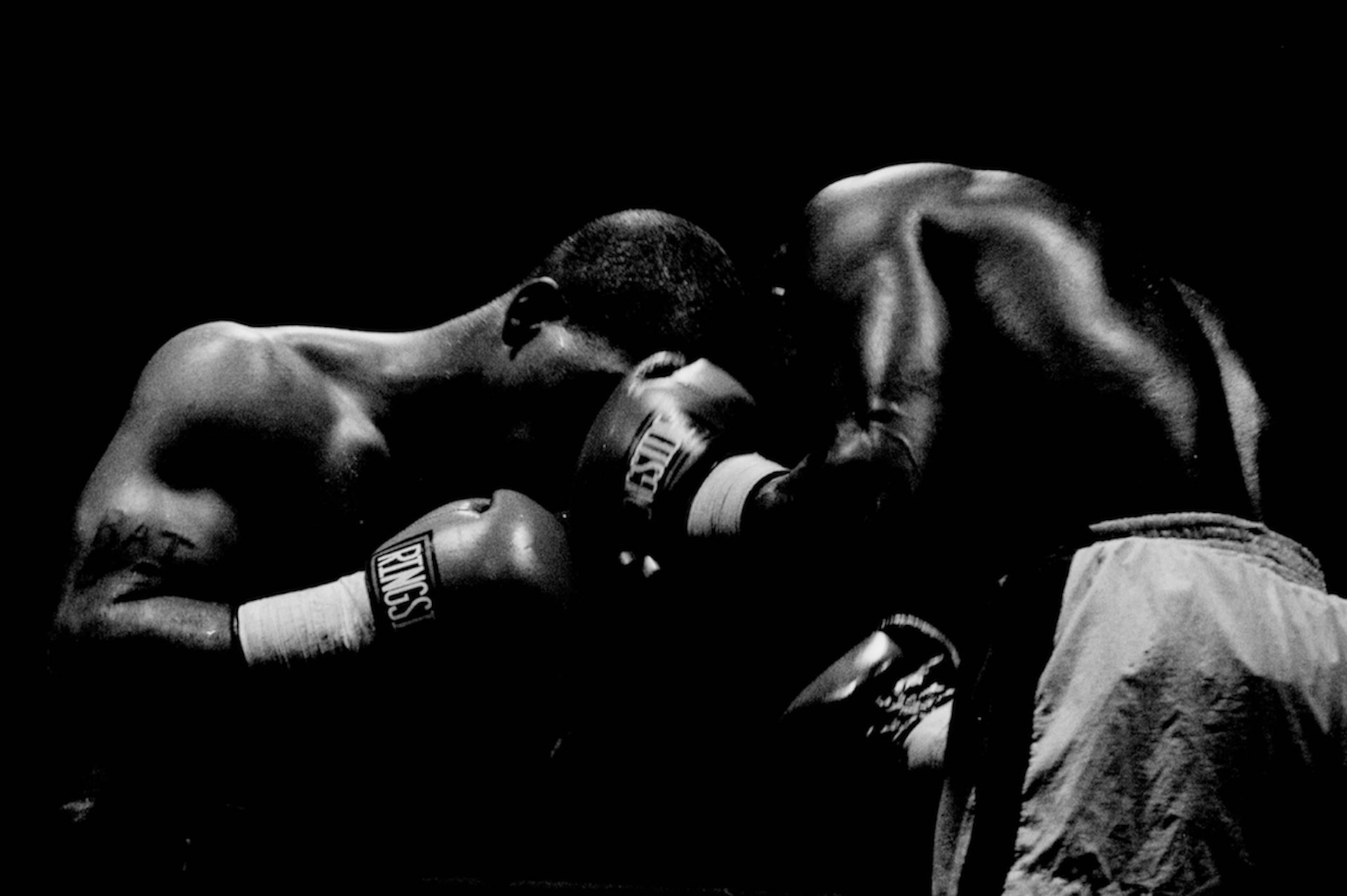
Boxers at the Teamsters Hall where low key matches were held on weekend nights.
Giordano found he was able to move between the city’s diverse scenes and subcultures with relative ease. He remembers attending the Baltimore Crown Awards, an underground hip-hop award show (“People were so welcoming; the hip-hop community here [in Baltimore] is fantastic,” he says), and the city’s illicit sex parties, where a bracelet system let photographers know what you could and couldn’t photograph. “A red wristband was no photos. Yellow was no faces,” he explains.
It wasn’t until the early-2000s, when acts like Mullyman, Jimmy Jones, and DJ Benny Stixx erupted onto the city’s flourishing hip-hop scene, that Baltimore began to establish itself as a cultural hotspot. This was followed by what Giordano describes as a “very white indie scene”, which kicked off around 2004 to 2005, with acts like Future Island, Dan Deacon, and Beach House.
“I saw them [performers] come up in these legit DIY spaces, these were places the cops would raid. We weren’t allowed to tell people where we were going to see the show,” Giordano remembers.
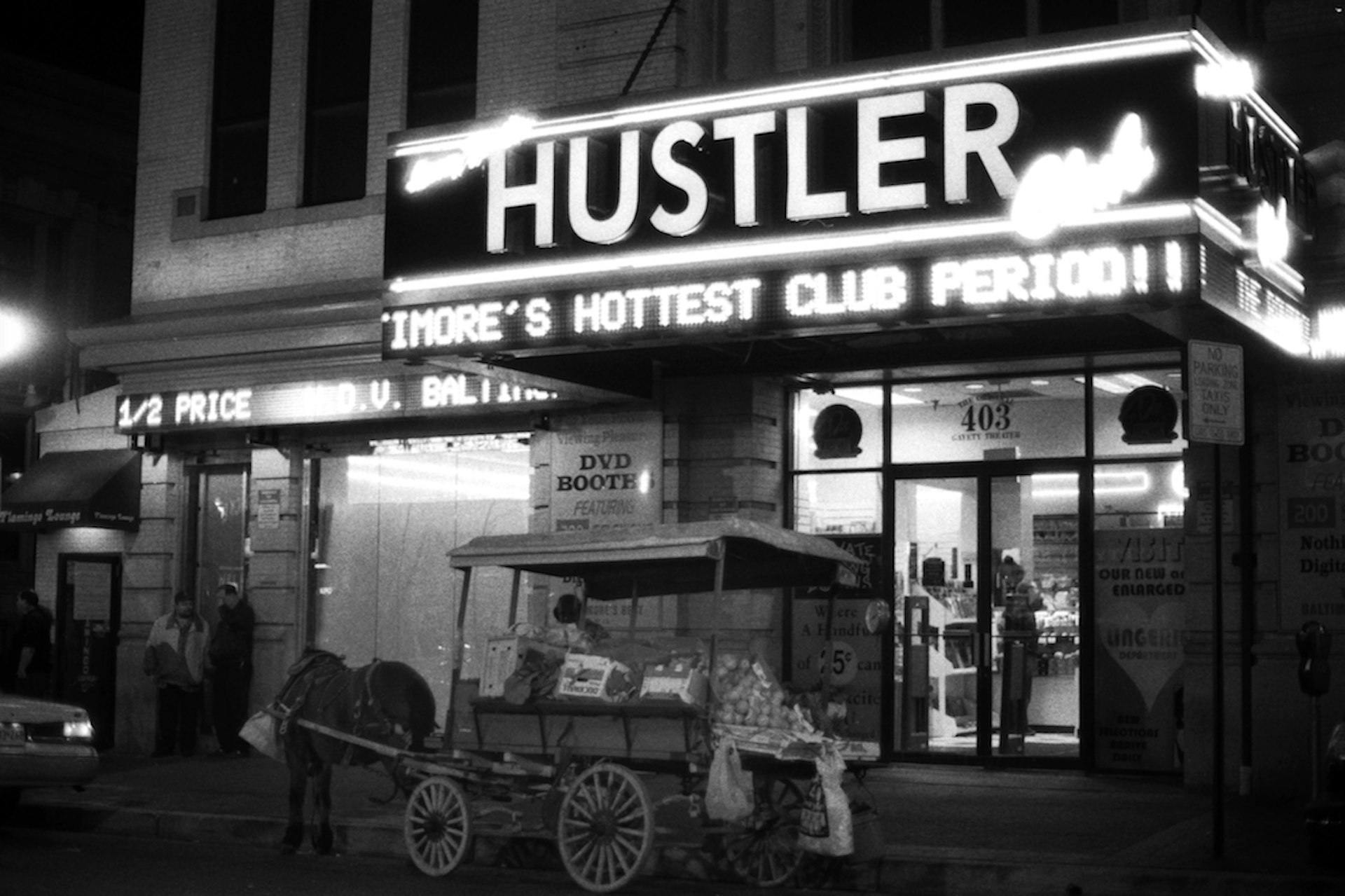
Baltimore fresh fruit sellers, known as Arabbers, in front of the city’s Hustler strip club in the red light district
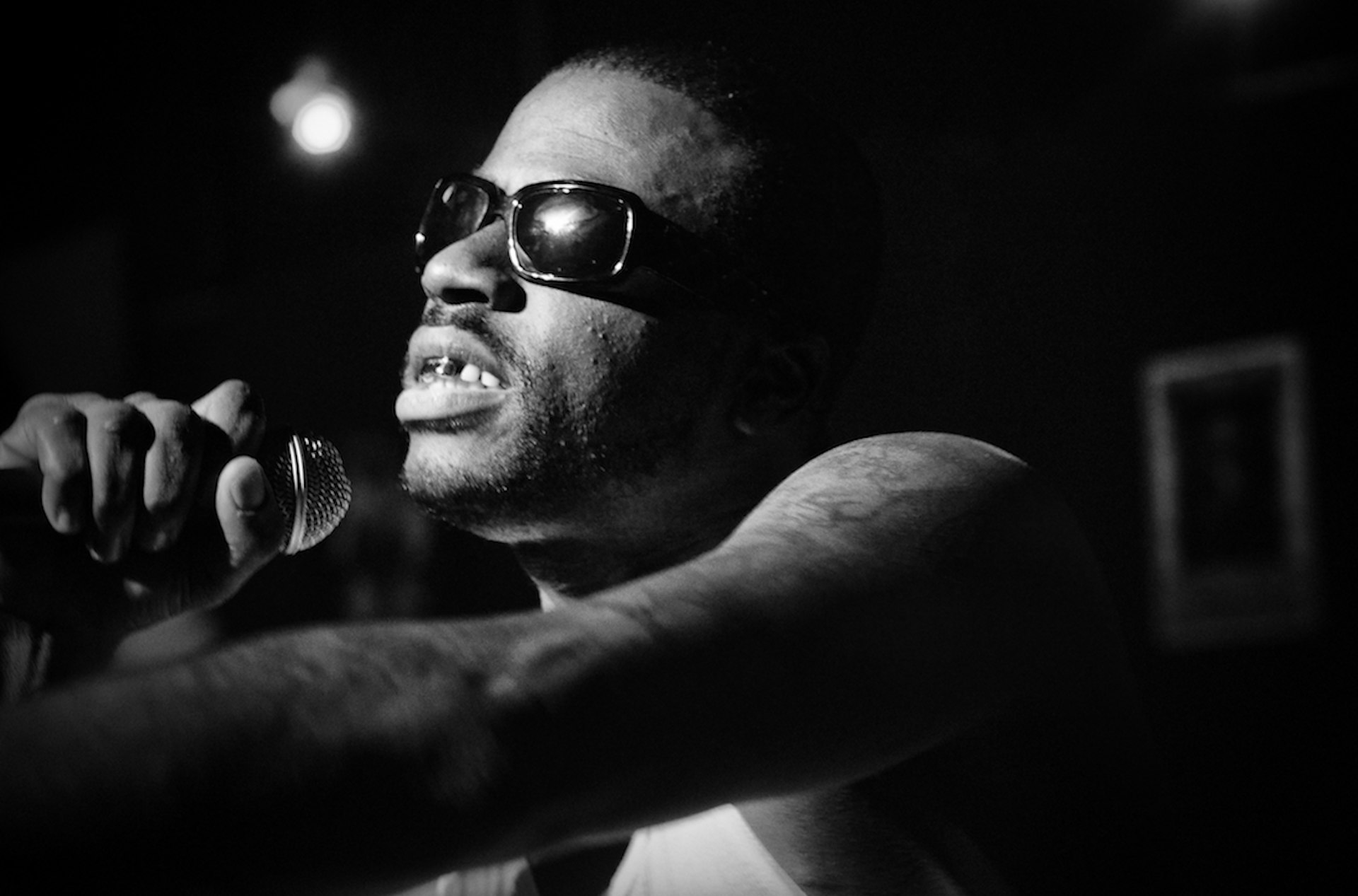
A singer takes the stage at one of Baltimore’s underground open mic hip-hop nights
“We had these ‘text only’ parties, a lot of DJs that were kind of on this scene here didn’t want to blow their cover,” explains Giordano. “So, I would get an email from a DJ friend of mine being like, ‘Hey, What’s your phone number?’ And then at two in the morning, I get an address and then I’d show up at this huge warehouse.”
In 2009, when the city’s nightlife was at its heights, Rolling Stone dubbed Baltimore’s music scene the best in the country. Now, over 10 years on, many of these acts that helped establish the city’s nightlife are world-famous, and no longer frequent Baltimore underground clubs, Giordano says. A few years ago, there was a nationwide crackdown on DIY. “And that was kind of the end of that scene,” he says.
For Giordano, the book represents what now feels like a distant memory. “They [Gen Z] stay home… the more weed becomes legal, it’s like: Why go out? Why would I pay $15 for a beer?”
“The book is kind of a sad epilogue to real nightlife, to going to a club and not having to worry about masks or temperatures,” Giordano says. “We’re not going to get back to being that unrestrained. Not for a while, anyway.”
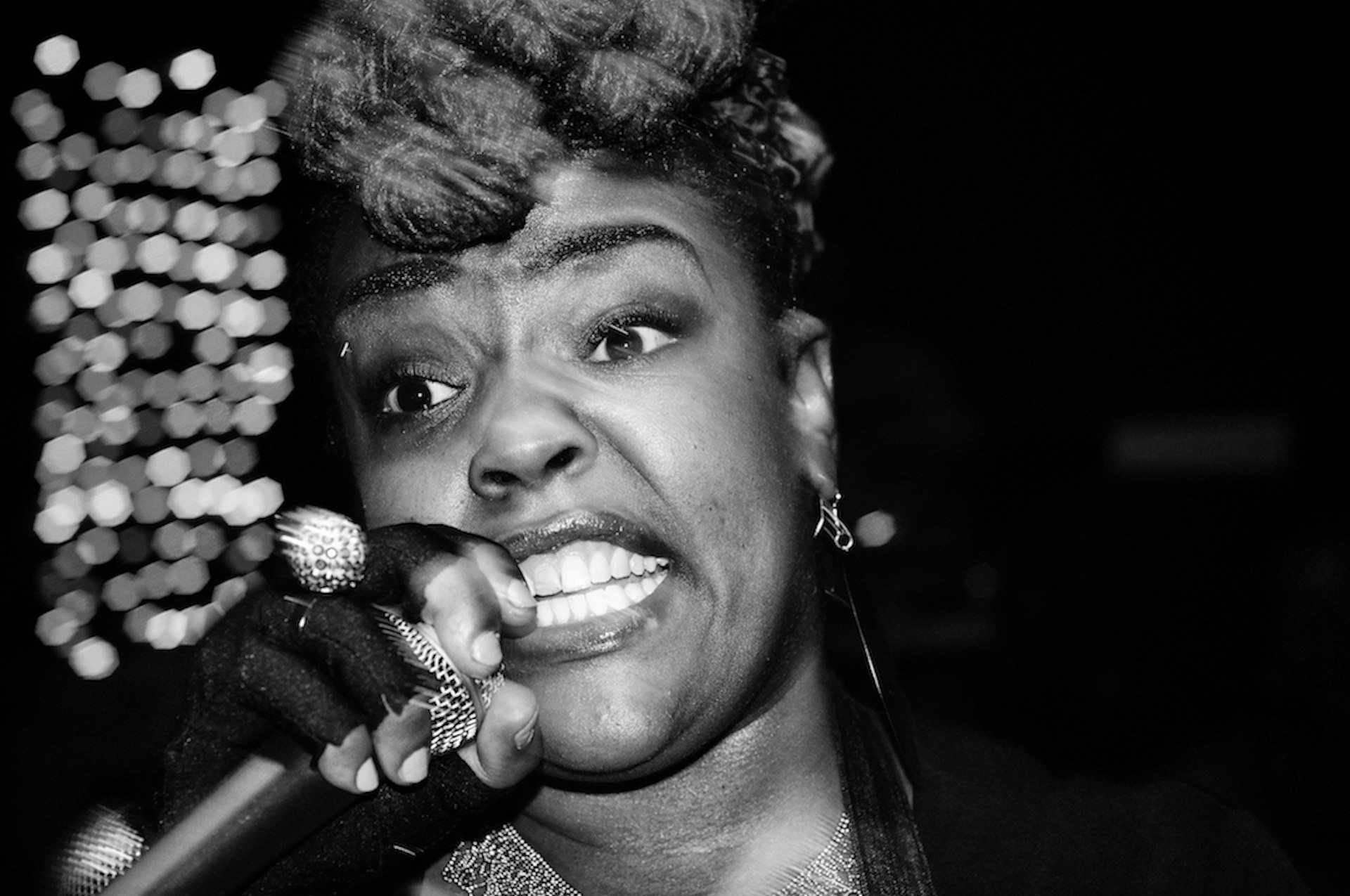
Baltimore’s underground open mic hip-hop night
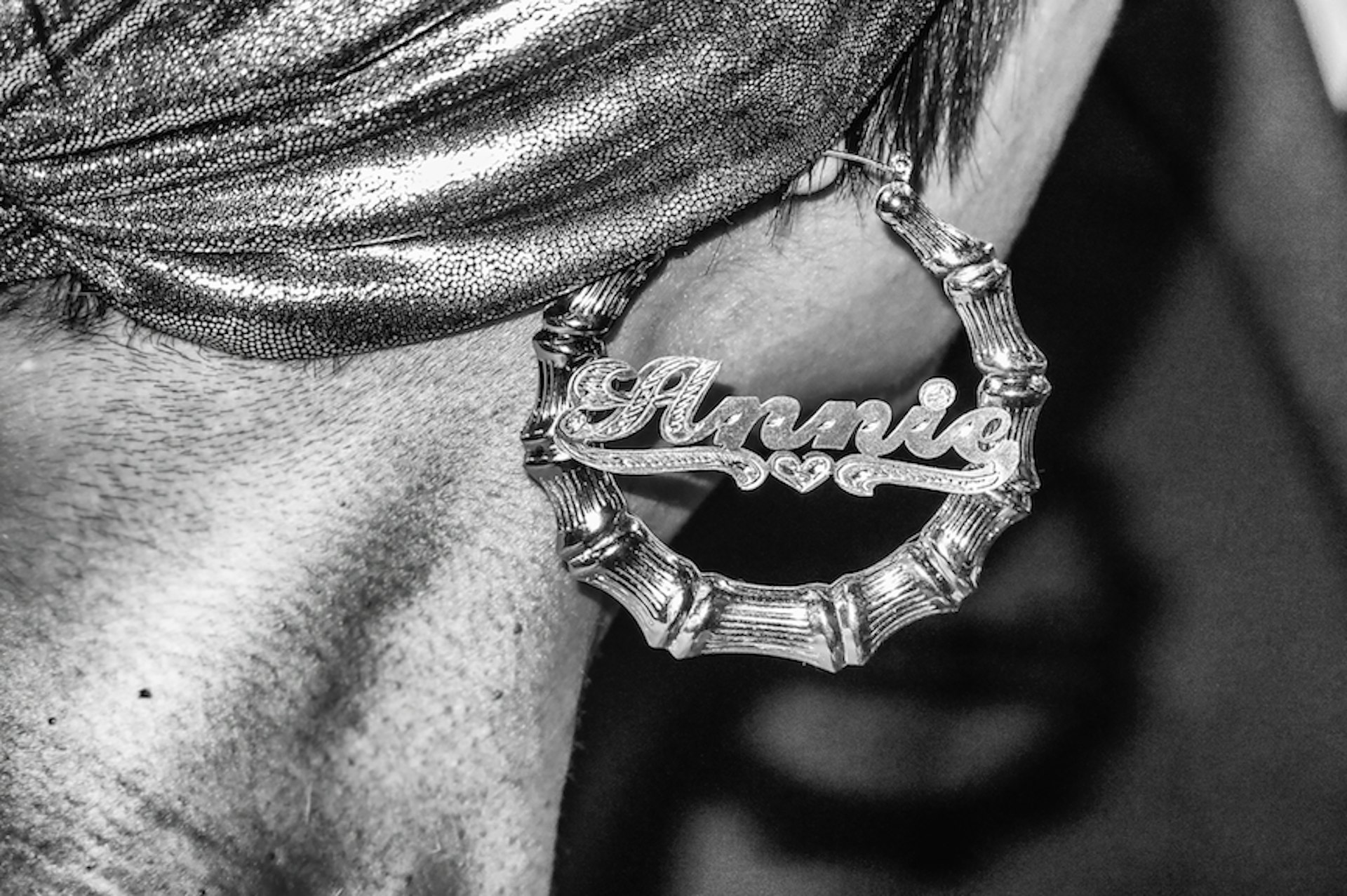
A disco fan at a Pratt Contemporaries Studio 54 party
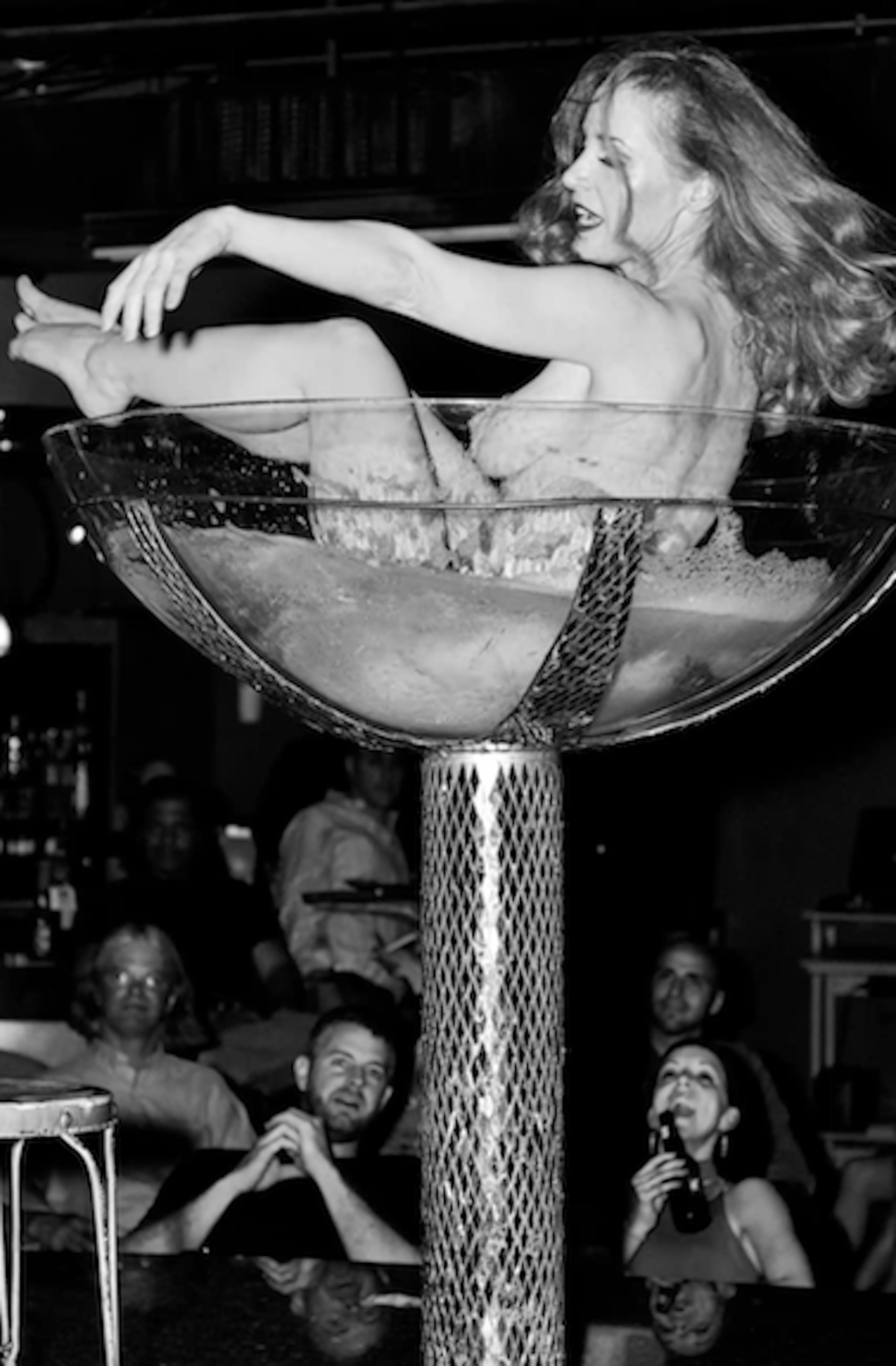
Burlesque dancer at a club on Route 40
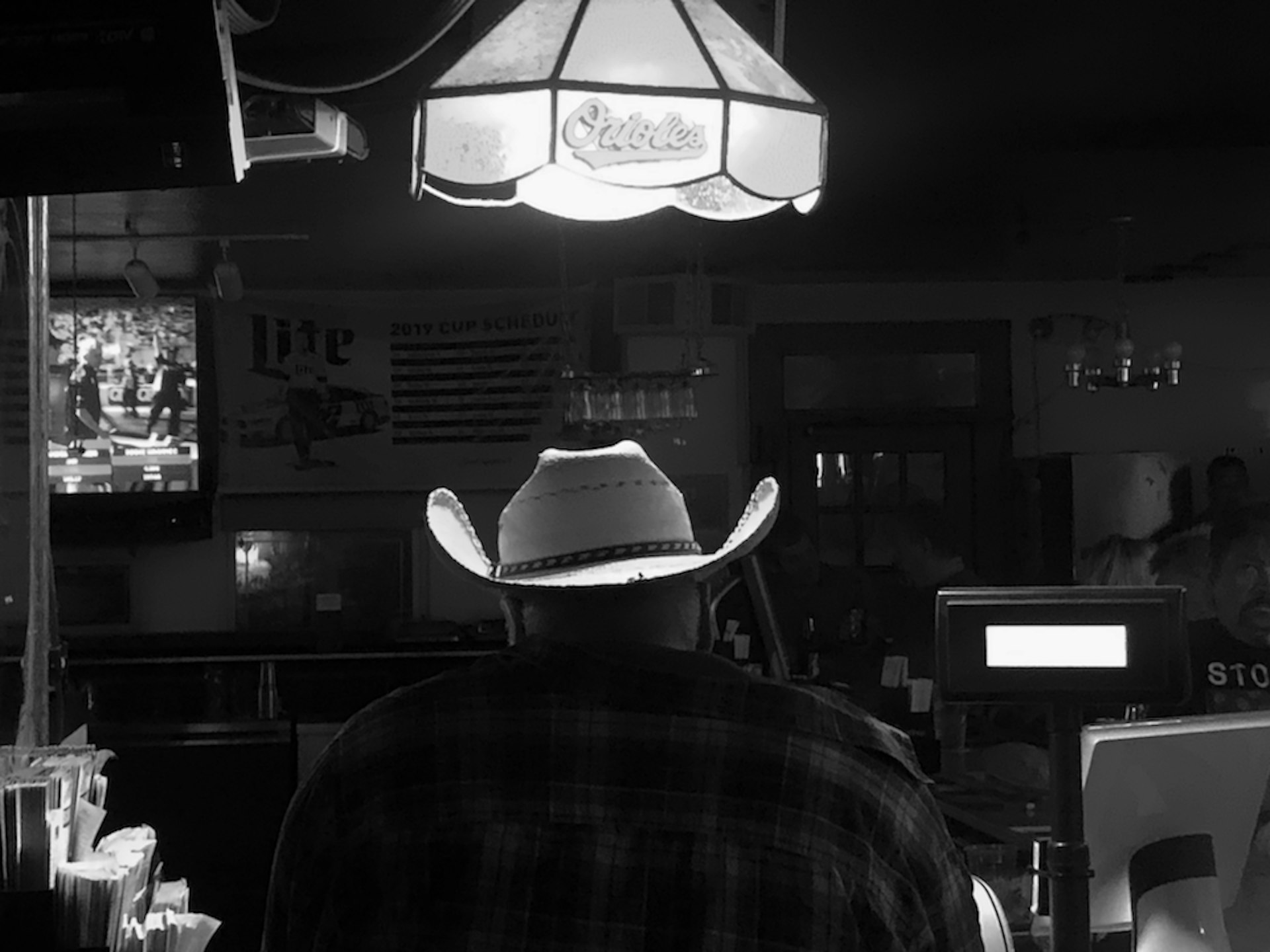
A cowboy at Pop’s Tavern
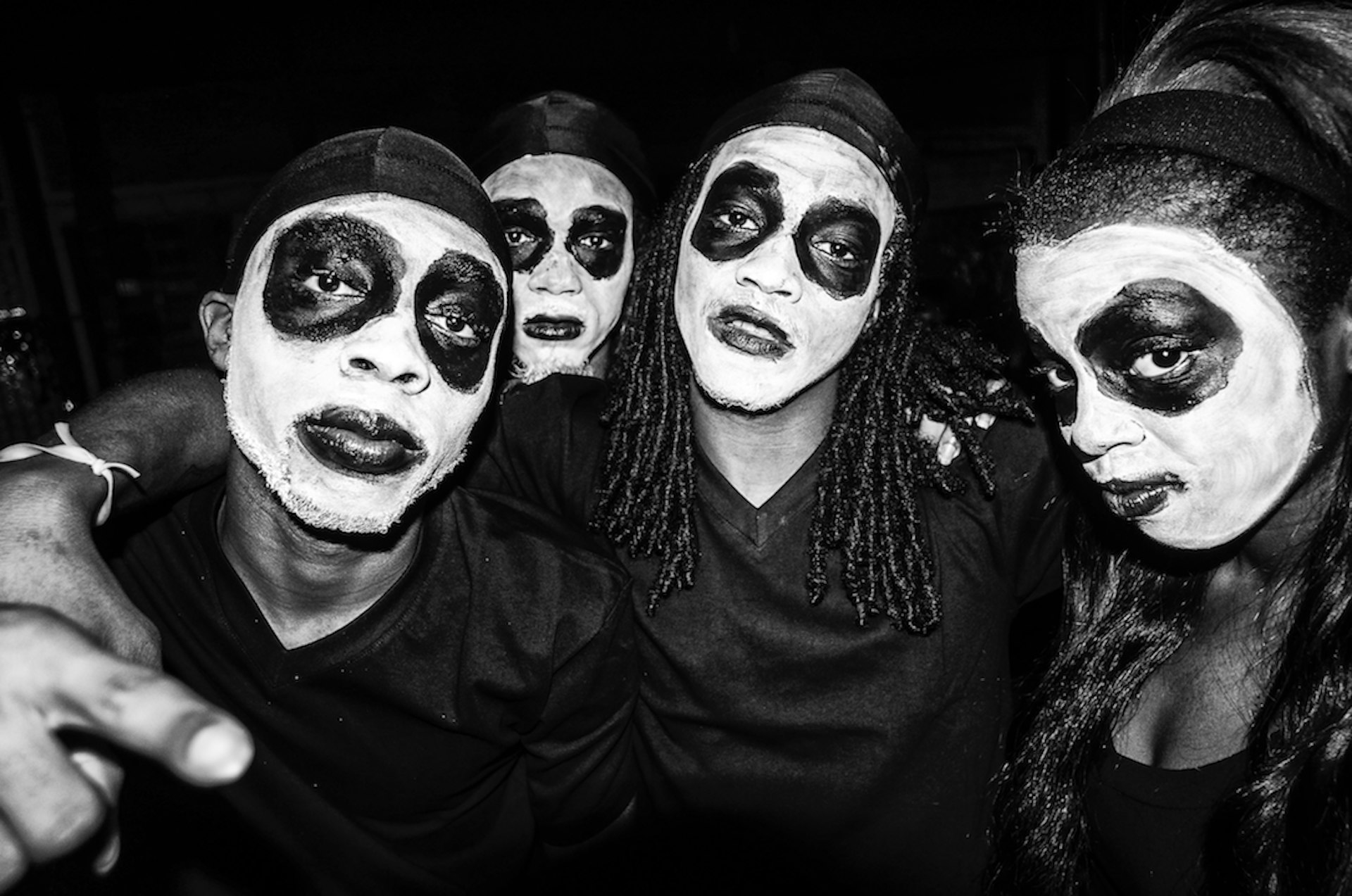
Backing dancers at Scapescape, a Baltimore street festival
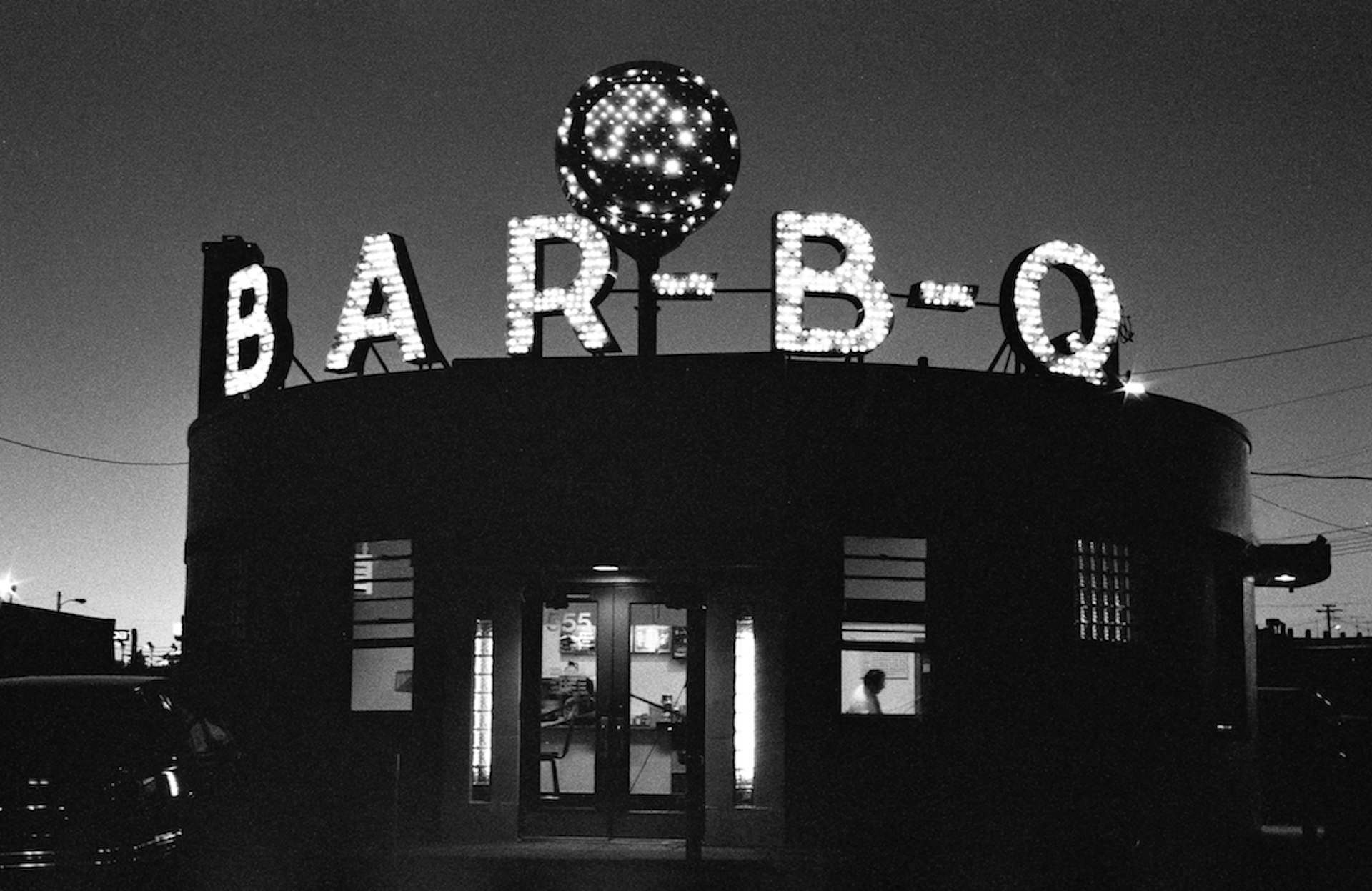
Circle Bar-B-Q
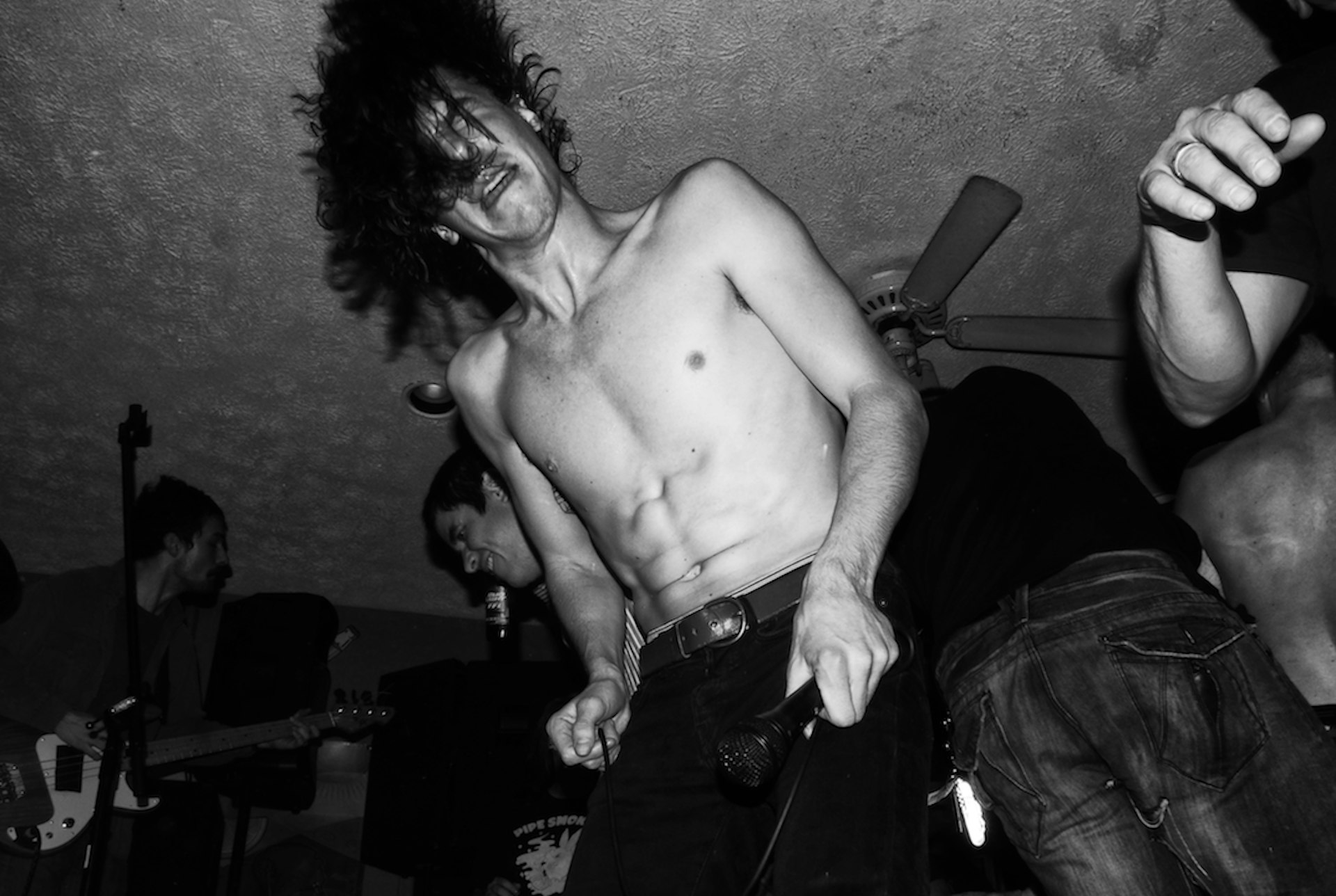
The band Dope Body perform at an underground venue in Baltimore’s H&H Building where bands like Beach House, Future Islands, Wye Oak, and Dan Deacon kicked off their careers

The Baltimore Crown Awards, an underground hip-hop awards show held at The 5 Seasons club
We Used To Live At Night is available to pre-order on The Culture Crush.
Follow Joseph M Giordano on Instagram.
Enjoyed this article? Like Huck on Facebook or follow us on Twitter.
